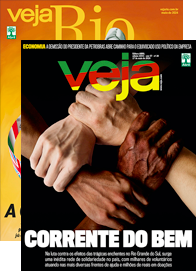As perguntas para a última prova de MASTER OF WINE
“Master of Wine” é o título mais cobiçado pelos profissionais do vinho.

Por Marcelo Copello
“Master of Wine” é o título mais cobiçado pelos profissionais do vinho. Existem apenas 355 no mundo, certificados pelo The Institute of Masters of Wine, com sede em Londres.
A prova dura 4 dias, com degustações às cegas pela manhã e prova escrita à tarde, nas quais os canditos precisam escrever dificílimos ensaios dissertativos. Vajam abaixo a prova mais recente, que aconteceu há poucos dias. Não traduzi, pois uma das dificuldades (para nós) é justamente ser em língua estrangeira, na qual o canditato precisa se expressar com fluência e de forma estruturada e organizada.
PAPER 1 – THE PRODUCTION OF WINE – PART 1 (Viticulture)
(THREE questions to be answered, ONE from Section A and TWO from Section B)
Section A
1. Temperature is one of the most impactful environmental variables on wine grape growing. How does temperature affect viticulture?
2. Water availability is increasingly an issue in some wine producing regions. How can a viticulturist best ensure water sustainability when establishing and managing vineyards in drought-prone regions?
Section B
3. Labour supply for vineyard work is decreasing in many parts of the world. If this trend continues, how will this affect viticulture, and how can vineyard managers around the world best prepare for, and handle, a shortage of workers?
4. Discuss which vine varieties would be most suitable for the production of dessert wines. Explain your choice with specific reference to any climatic requirements.
5. Does soil preparation affect the potential yield and quality in a vineyard?
6. What are the principal pests and diseases facing vine growers today, and how can they best be managed?
THEORY PAPER 2 – THE PRODUCTION OF WINE – PART 2 (Vinification and Pre-bottling Procedures)
(THREE questions to be answered, ONE from Section A and TWO from Section B).
Section A
1. “This wine has been bottled un-fined and unfiltered.” Assess the implications for the winemaker.
2. Sauvignon Blanc appears in many styles throughout the world. Compare and contrast Sauvignon Blanc winemaking practices around the world.
Section B
3. Discuss the roles of enzymes in winemaking.
4. Compare and contrast winemaking techniques best employed for Syrah grown in Cornas, McLaren Vale and Hawke’s Bay.
5. Temperature management is the key to modern winemaking. Discuss.
6. How, and to what extent, can yeast influence the final style and quality of wines?
THEORY PAPER 3 – THE PRODUCTION OF WINE – PART 3 (Handling of Wines)
(Answer TWO questions from the FOUR listed below)
1. Outline the most important quality control checks during bottling and why each is necessary.
2. What analyses should be carried out at the winery pre- and post-bottling to ensure that a wine is in good condition and conforms to legal requirements for sale?
3. Many winemakers are reducing the levels of free and total sulphites in wine. Consider the role of sulphites at bottling and until the wine reaches the end consumer. What are the implications of reduced levels of free sulphites?
4. Briefly discuss three of the following showing their importance to the handling of wine:
a) Preservatives in wine
b) Preventing deposits in bottled wine
c) Inert storage
d) Pre-bottling filtration
THEORY PAPER 4 – THE BUSINESS OF WINE
(THREE questions to be answered, ONE from Section A and TWO from Section B.)
Section A
1. How can the role of the intermediaries between producer and consumer be justified? How is it changing? Use examples from several different wine markets.
2. Can small independent wine retailers compete with large chains on price? How else can they compete effectively? Section B
3. You inherit the equivalent of US$ 10 million and want to invest in the wine industry. How would you spend your money to attract the greatest return on investment? Explain your logic.
4. In what ways have social media changed the marketing of wine brands over the past 10 years?
5. You are Export Director of an established large wine company producing in excess of one million nine litre cases. How would you seek to capitalise on the potential of the growing Chinese market for imported wine? What are the risks and how can they be managed?
6. As the owner of a Bordeaux Classified Growth from the Left Bank, what options are available to you today to present your wine to the market? Evaluate these options from commercial and brand-building standpoints.
THEORY PAPER 5 – CONTEMPORARY ISSUES
(TWO questions to be answered, ONE from Section A and ONE from Section B.)
Section A
1. What is the importance of alcohol in wine?
2. Has science taken away the romance of wine?
Section B
3. How relevant is blind tasting in assessing wine?
4. What are the causes for optimism in the wine world today?
5. Does great wine need a great story?
Leia também: Marcelo Copello jurado no Born Digital Wine Awards 2017


 SEGUIR
SEGUIR
 SEGUINDO
SEGUINDO









